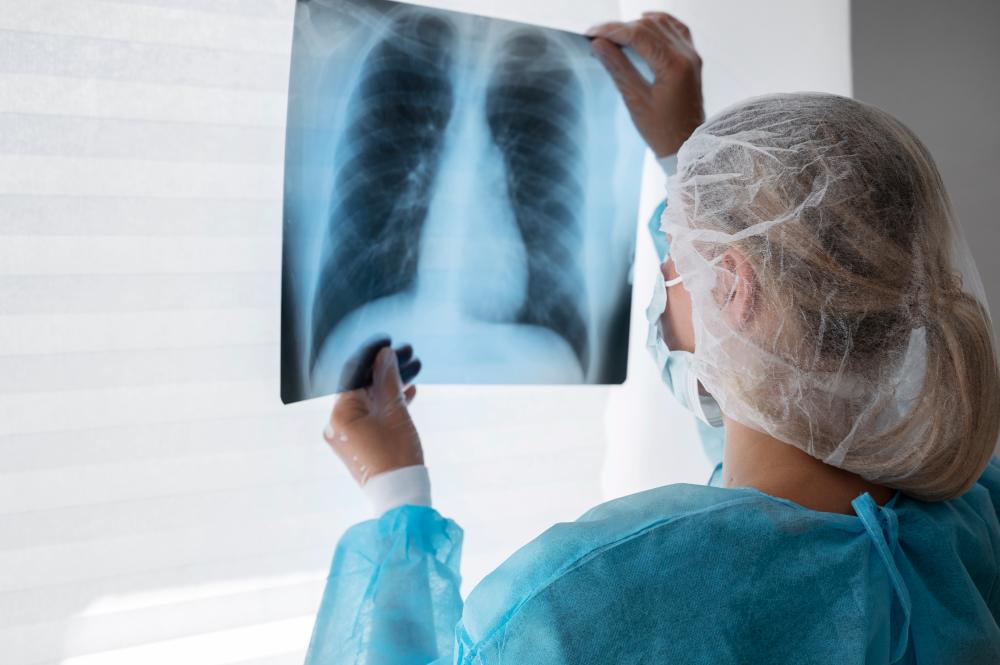KUALA LUMPUR: Taking symptoms lightly and patients’ failure to complete their treatment, are among the major hurdles in tuberculosis (TB) eradication in the country.
An expert said, these two factors can potentially increase infection cases as well as create drug- resistant or drug-immune tuberculosis clusters.
“This is worrying as Malaysia has shown an uptrend in cases over the last three years,” Dr Nurul Yaqeen Mohd Esa, a Consultant Respiratory Specialist and Internal Medicine Physician at Sunway Medical Centre Velocity told Bernama.
Citing data from the Ministry of Health (MOH), she said Malaysia recorded 26,781 TB cases in 2023, a 5.47 per cent increase from the 25,391 cases reported in 2022. In 2021, there were 21,727 TB cases reported in the country.
Deputy Minister of Health Lukanisman Awang Sauni has said, of the total cases recorded last year, 22,680 (84.7 per cent) were infections among citizens while 4,101 cases (15.3 per cent) were among non-citizens.
“Sabah reported the highest number of TB cases last year totalling 5,814, followed by Selangor with 5,631 cases and Sarawak with 3,177 cases,” he told the Senate on March 18.
WORRYING
Sharing insights on cases of tuberculosis or dry cough, Dr Nurul Yaqeen said even more worrying is the situation in several countries including Southeast Asia which account for around one-fourth of the world’s population and contributing over 45 per cent of annual TB-burden cases yearly, with new cases each year.
“It was estimated that in 2022, more than 4.8 million people fell ill with TB and more than 600,000 died (in the same year) due to the disease in this region.
“The region also accounts for more than 38 per cent of the estimated global incidence of drug-immune TB cases,” she said, adding that in 2022, about 170,000 TB patients in the region have been identified as drug-resistant or drug-immune TB patients and only 74,300 cases were enrolled for treatment.
According to her, among the nations with the highest TB cases in Asia are Bangladesh, India, Indonesia, Myanmar and Thailand, while Nepal is classified as a ‘hotspot’ region with the highest number of drug-immune TB patients.
According to the World Health Organisation (WHO) in its annual Global TB report, about 10.6 million people were infected with TB in 2021, a 4.5 per cent increase from the previous year.
ALSO READ: Two pct increase in TB deaths last year - Dzulkefly
Most of the TB patients in 2021 were from Southeast Asia (45 per cent), Africa (23 per cent) and West Pacific (18 per cent).
And the WHO blamed the resurgence of the disease on the pandemic, saying the crisis had had a huge and ongoing impact on access to diagnosis and treatment.
It said tuberculosis has rebounded for the first time in nearly two decades, claiming an estimated 1.5 million lives in 2020 and 1.4 million in 2019.
DEATH, PARALYSIS, BLINDNESS
According to Dr Nurul Yaqeen, tuberculosis is caused by germs that are spread from person to person through the air, noting that it can easily be transmitted through saliva and sputum or through touching and also the bloodstream.
The risk is higher if the TB patient is within a cluster or residing together in one place with other individuals.
“The dry cough germs can easily spread within family members who share the same ventilation system in the house and interacting with each other.
“Even among office colleagues who are close contacts to TB patients, they can be infected with TB when they are together with the patient in a closed indoor space for more than eight hours a day for a period of around two or three months,” she added.
However, Dr Nurul Yaqeen said, of concern is when some members of the community who have TB signs or symptoms do not give the matter (symptoms) due attention, hence increasing the risks of infecting others.
“Among the TB symptoms are prolonged cough for over two weeks, fever, night sweats, losing appetite, losing weight and coughing up blood,” she said, adding that that some patients are not aware that they have contracted the disease as they do not have any symptoms.
According to her, the period for which the TB germs become active and infect an individual would depend on the person’s immunity level.
“Some people will contract TB as soon as they are infected, or before their body immune system can fight the TB bacteria.
“For some individuals, they only fall sick several years later when the dormant TB bacteria eventually start to reactivate. Reactivation is more likely to occur when the person’s immune system becomes weak,” she explained.
She said that the long treatment period (that is for six months or can be extended to one year) also caused problems when many patients failed to complete their treatment within the stipulated period.
“Whenever a TB patient fails to complete his or her treatment as scheduled, this situation can develop into drug-immune infections, making it difficult for treatment and requiring a longer period for treatment.
“Don’t take things lightly; although the TB germs would normally attack the lungs (pulmonary tuberculosis), it can also spread and damage other organs such as the kidney, skin, eyes, neck glands, bones, heart and brain.
“The situation can cause organ failure and subsequent death,” she said, adding that the TB infections can also cause blindness and paralysis.
On the period taken for a TB patient to be in such a situation, she said it would depend on the level and type of TB that the individual is suffering from.
“Around several weeks to several months...and can be fatal for the patient if it is not properly treated,” she said.
HOLISTIC APPROACH
However, Dr Nurul Yaqeen said that based on the TB situation, most affected nations have shown high commitment in addressing the spread of the disease, in line with the WHO target to make the world TB-free by 2035.
She said that the world body’s commitment in realising the target is reflected in the theme of the World Tuberculosis Day which is observed for two consecutive years, ‘Yes! We can End TB!’ last year and this year.
“The theme used for the second year is aimed at creating awareness on the importance of efforts to eradicate TB,” said Dr Nuul Yaqueen, who believes that public awareness is still low based on the total infections.
World TB Day, observed annually on March 24, is designed to build public awareness about the global epidemic of tuberculosis and efforts to eliminate the disease.
At the same time, Dr Nurul Yaqeen is optimistic that Malaysia is capable of eradicating the disease and achieving the WHO target to end the epidemic.
ALSO READ: Fight against TB demands comprehensive, multi-faceted approach - Expert
However, she said that prevention, control and treatment for TB infections should be conducted in a consistent and holistic manner involving all parties.
“Cooperation from all parties, involving the government and the public, is crucial as the public awareness level is still low,” she said.
While commending efforts by MOH in eradicating tuberculosis, Dr Nurul Yaqeen however, proposed several improvements including enhancing the tuberculosis detection facilities to allow the community to undergo faster screening facilities.
MOH has earlier said that it is currently in the process of procuring an Ultra Portable X-ray machine to aid in detecting TB in remote areas or outside health facilities, particularly in regions with limited access.
As of last year, a total of 62 units of rapid molecular tests have been deployed nationwide to facilitate early detection of TB and drug-immune TB cases.
This article is written in conjunction with World Tuberculosis Day which is observed annually on March 24










